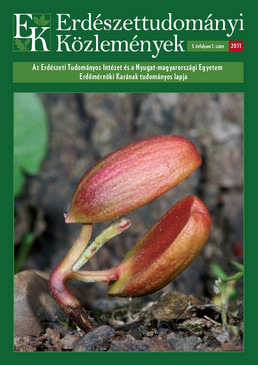Population genetic inventory of transdanubian Leuce poplars applying RAPD and cpDNA markers
Attila Benke, Klára Cseke & Attila Borovics
Correspondence
Correspondence: Benke Attila
Postal address: H-9600 Sárvár, Várkerület 30/A.
e-mail: benke[at]ertisarvar.hu
Abstract
A population genetic study of native white poplar and european trembling aspen stands was carried out with exhaustive sampling throughout the Transdanubian region. The main goal was to make a genetic inventory in different regions and to estimate the genetic diversity within and between the analysed subpopulations. RAPD and chloroplast DNA markers were used. The RAPD and PCR-RFLP analyses were performed on 267 and 300 samples, respectively. Based on two highly polymorphic RAPD primers the subpopulation from the Belsô-Somogy region showed the highest diversity in case of both species. By the results of the applied four cpDNAmarkers the highest diversity level was found in the Kis-Balaton subpopulation of white poplars, and in the Villány subpopulation of trembling aspens. No correlation was found between the geographic and genetic (Nei’s index) distances of the populations analysed by both RAPD and cpDNA markers, respectively. The genetic variation of both genetic markers was basically derived due to the genetic diversity of populations.
Keywords: Leuce poplars, molecular genetic variability, Shannon-index, RAPD, cpDNA, Nei’s genetic distance
Open Acces
For non-commercial purposes, let others distribute and copy the article, and include in a collective work, as long as they cite the author(s) and the journal, and provided they do not alter or modify the article.
Cite this article as:
Benke, A., Cseke, K. & Borovics, A. (2011): Population genetic inventory of transdanubian Leuce poplars applying RAPD and cpDNA markers. Bulletin of Forestry Science, 1(1): 83-93. (in Hungarian)
Volume 1, Issue 1
Pages: 83-93
First published:
1 September 2011
Related content
9
More articles
by this authors
8
Related content in the Bulletin of Forestry Science*
More articles by this authors in the Bulletin of Forestry Science
* Automatically generated recommendations based on the occurrence of keywords given by authors in the titles and abstracts of other articles. For more detailed search please use the manual search.
